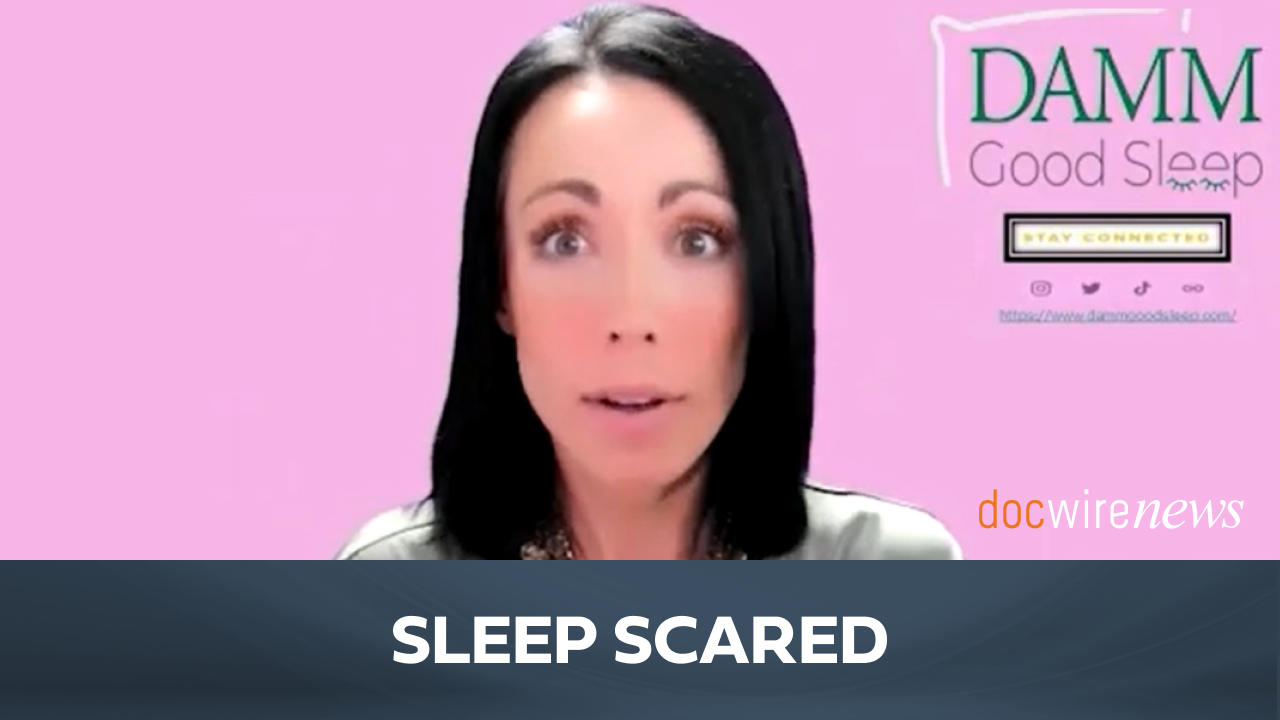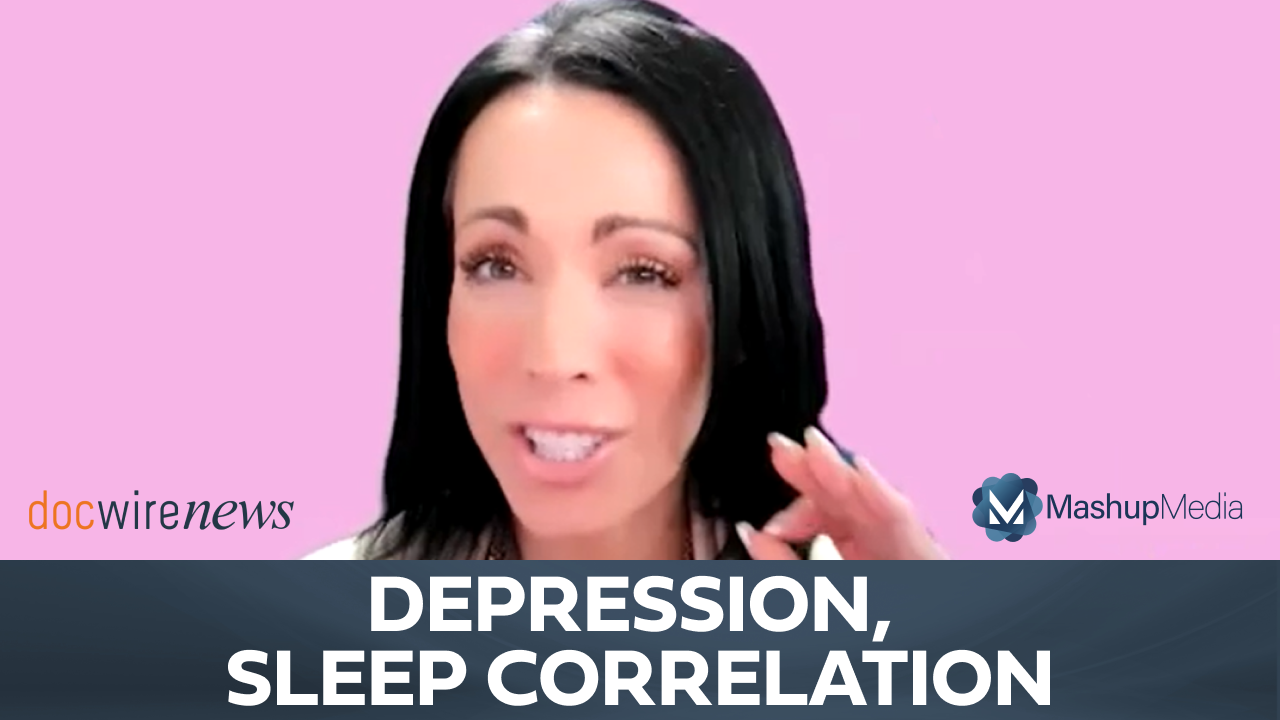Revolutionizing Sleep Apnea Diagnostics With Home Sleep Testing Solutions
By Kirk Huntsman, Rob Dillard - Last Updated: February 25, 2025The FDA-cleared, non-invasive medical device—VivoScore, developed by Vivos Therapeutics, by leveraging proprietary Cardiopulmonary Coupling (CPC) technology—is revolutionizing the diagnosis of Obstructive Sleep Apnea (OSA) in clinical practice.
This Bluetooth-enabled ring delivers clinical-grade sleep diagnostics at a fraction of the cost of traditional polysomnography, making diagnostics accessible for healthcare professionals under $50 per test. It is also suitable for patients as young as 2 years old, significantly widening its clinical application.
This is critically important since OSA, affecting up to 80 million US adults, is linked to severe health risks, including cardiovascular disease, stroke, diabetes, and even cancer.
DocWire News spoke with Kirk Huntsman, Chairman & CEO of Vivos Therapeutics, about the company and how Vivos is helping to advance care in the sleep medicine space.
About Kirk Huntsman and Vivos Therapeutics
My name is Kirk Huntsman. I’m the co-founder and CEO of Vivos Therapeutics. I have been a business executive and founder of a number of different companies throughout my career. I’ve been nearly 40 years in business and have started a number of different companies. Some of which have gone splendidly well, and other ones not so much, and my current venture here is called Vivos Therapeutics. Vivos is a medical technology company that is working with a novel disruptive technology in the obstructive sleep apnea, and we think we are revolutionizing the world with this thing. So, we are very excited to be able to share what we’re doing at Vivos and talk about this a little more.
DocWire News: What are the primary barriers preventing patients from seeking timely and accurate diagnosis for OSA and how do current diagnostic methods for sleep-related breathing disorders fall short in addressing patient needs?
Kirk Huntsman: That’s a really good question. It’s a loaded one, right? We could probably spend the entire time together talking about that. I think one of the biggest obstacles to getting obstructive sleep apnea diagnosed and treated is the prospect that patients have, the idea that patients have, that they’re going to end up in a continuous positive airway pressure (CPAP). I think if that’s my fate, I’d rather just suffer through whatever I’m suffering through and not have to go get tested and all that sort of thing. It’s only when the condition becomes so acute and so debilitating into my daily life that I really seek confirmation and I’m willing to try anything. So, I think there’s a mindset associated with obstructive sleep apnea, where we’ve come to believe, a lot of people have come to believe, wrongly it turns out, but they’ve come to believe that, “If I’m diagnosed with sleep apnea, then I’m going to have to wear a CPAP every night for the rest of my life, and I don’t want to do that. Therefore, I’d rather just not even know about it. Just tune it all out.”
So, one of the other barriers has been just the difficulty of getting properly diagnosed and I think technology has come far enough now where home sleep testing devices are pretty much taking over the market. There’s a lot of really good technologies that are out there that make getting a home sleep test comfortable, affordable, easy to do. So, I think the lower the cost, the easier it is to get a diagnosis. Then patients need to understand that there are many other options and our company, we believe, has the best alternative option to CPAP that is on the market today.
What potential does at-home technology hold for improving early detection rates for OSA and what makes non-invasive solutions like VivoScore a more viable alternative to traditional sleep labs?
Getting a test for sleep apnea is far more than just peeing in a cup. Just to draw an analogy there, right? If that’s all I have to do or to get a little blood drawn, that’s one thing. But if I have to actually go to a facility and have people wire me up head to toe with all kinds of leads and wires and sensors, and then sleep there overnight, that’s a bigger ask. I think a lot of patients and a lot of insurance payers, you got to be pretty sure that this is a really serious condition. An overnight sleep test, which is called a polysomnogram, can cost up to $6,000. The average price is closer to two, but it’s still a very expensive proposition, especially if you do that at a hospital or a university hospital setting.
So, the advent of non-invasive, at home, put a ring on your finger and go to sleep type technology, really has made it very simple, very safe, very comfortable to use and the technology has gotten to a point where some of this … The technology that we use is from a company called SleepImage right here in Denver, Colorado, and their technology is up to about 98% correlated with a polysomnogram. So, you’re not giving away a lot of accuracy to not go to a sleep lab and go through and endure all of that, and it can be done for under a 100 dollars. So, it’s really not, no longer is there a good reason not to have a sleep test and to have an awareness of your sleep, health and wellness, because it’s so inexpensive to accomplish.
How do VivoScore’s telemedicine capabilities provide deeper insights into patient care and treatment outcomes?
If I were to go have a sleep test and I were to use this home sleep test technology that we’ve talked about … We call it VivoScore, it’s actually powered by this SleepImage technology. So, we’ve white labeled it, branded it VivoScore, but it’s really SleepImage technology, and if I go and I have a test like that, literally, I wake up in the morning, pull the ring off my finger. My phone, which is connected to the ring via Bluetooth connection, actually recognizes that the test is over and immediately uploads the data from that night to the cloud, where the algorithms in the cloud basically facilitate the creation of a sleep test. That sleep test is then in a PDF format sent back to the medical doctor, and at that point, the medical doctor, who is qualified to read the test and interpret the results, can have a telemedicine visit with me or my provider, my primary care physician, whomever it was that referred me. Immediately, I can understand what my risk level is, what my condition looks like, and then I can start to explore options for treatment.
The biggest thing that I would say, I was with a cardiologist a month or so ago, and he said, “Whenever you have the opportunity, Kirk, you need to tell people that you need to remind everyone that 650,000 Americans lose their lives every year to cardiovascular disease, and then you need to remind them that obstructive sleep apnea is cardiovascular disease.” And so we now know that this thing that we used to think of as Uncle Bob who’s overweight and snores and creates a lot of noise, that’s no longer the stereotype. This is affecting women and children and everyone, and just like there are five vital signs that people typically take at the medical office, the sixth vital sign that should be taken at every annual exam, every physical, every whatever, is to have a home sleep test dispensed, and just like you know what your blood pressure is, you should know what your sleep health looks like. It is that important.
So, I think as research and technology has uncovered the true seriousness of this condition, I think everybody in America needs to really, and I hate to say it, but wake up and realize that sleep apnea is not something to fool with. It can affect thin people as well as heavyweight or overweight people. It can affect children as well as elderly people. It can affect every race. It can affect everyone and anyone. So, I think what I would say is, if you asked me what would be the message, it would be get yourself a home sleep test. Get tested, understand your condition and what it means, and then if you have obstructive sleep apnea, even mild can be dangerous. So, if you have obstructive sleep apnea, get treatment. Get into treatment. There’s good treatments available that can actually rehabilitate your airway and help your airway. Vivos is an alternative to CPAP, that you don’t have to end up in a CPAP every night for life.







 © 2025 Mashup Media, LLC, a Formedics Property. All Rights Reserved.
© 2025 Mashup Media, LLC, a Formedics Property. All Rights Reserved.